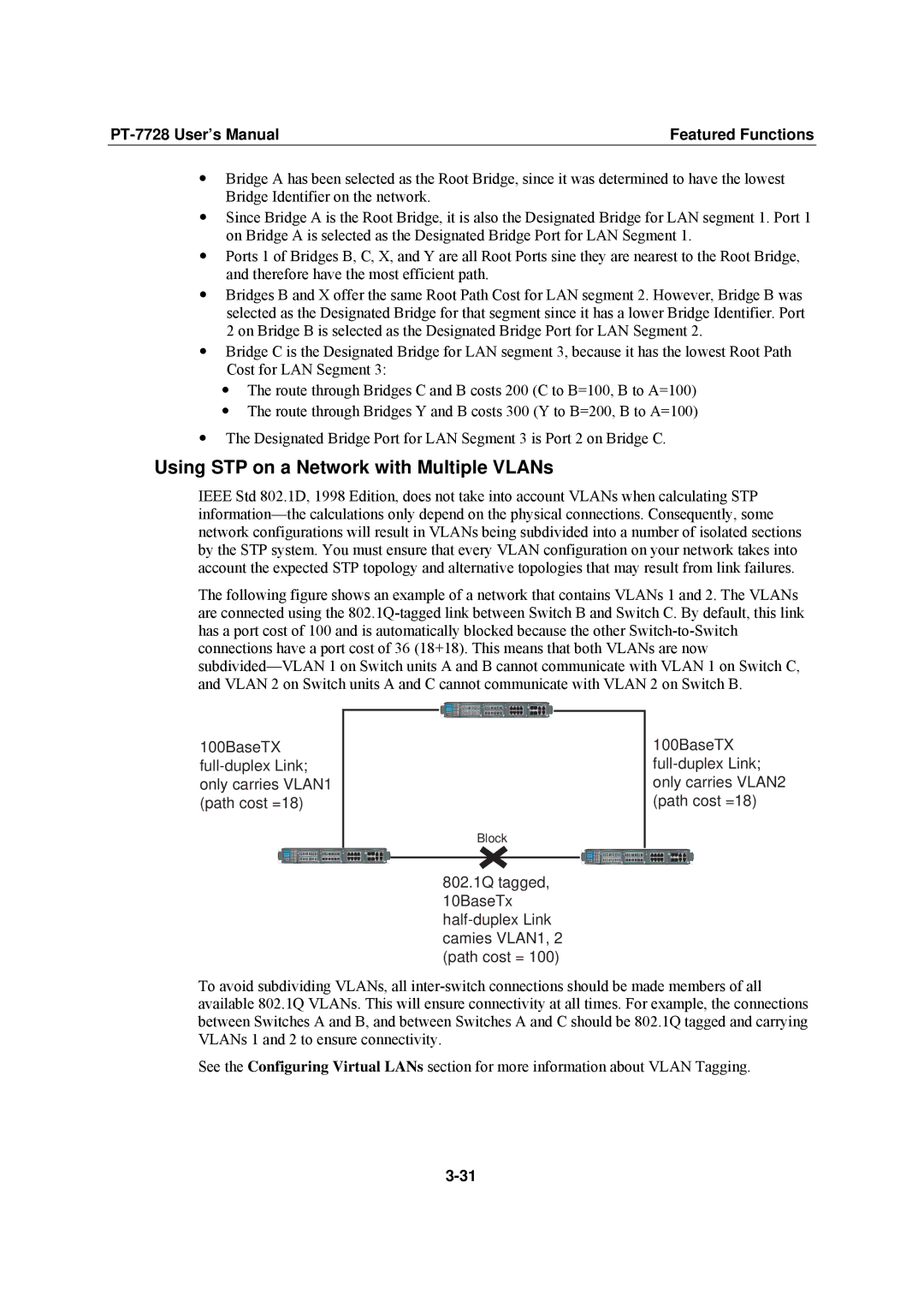
| Featured Functions |
yBridge A has been selected as the Root Bridge, since it was determined to have the lowest Bridge Identifier on the network.
ySince Bridge A is the Root Bridge, it is also the Designated Bridge for LAN segment 1. Port 1 on Bridge A is selected as the Designated Bridge Port for LAN Segment 1.
yPorts 1 of Bridges B, C, X, and Y are all Root Ports sine they are nearest to the Root Bridge, and therefore have the most efficient path.
yBridges B and X offer the same Root Path Cost for LAN segment 2. However, Bridge B was selected as the Designated Bridge for that segment since it has a lower Bridge Identifier. Port 2 on Bridge B is selected as the Designated Bridge Port for LAN Segment 2.
yBridge C is the Designated Bridge for LAN segment 3, because it has the lowest Root Path Cost for LAN Segment 3:
yThe route through Bridges C and B costs 200 (C to B=100, B to A=100)
yThe route through Bridges Y and B costs 300 (Y to B=200, B to A=100)
yThe Designated Bridge Port for LAN Segment 3 is Port 2 on Bridge C.
Using STP on a Network with Multiple VLANs
IEEE Std 802.1D, 1998 Edition, does not take into account VLANs when calculating STP
The following figure shows an example of a network that contains VLANs 1 and 2. The VLANs are connected using the
100BaseTX
Block
100BaseTX
802.1Q tagged, 10BaseTx
To avoid subdividing VLANs, all
See the Configuring Virtual LANs section for more information about VLAN Tagging.
